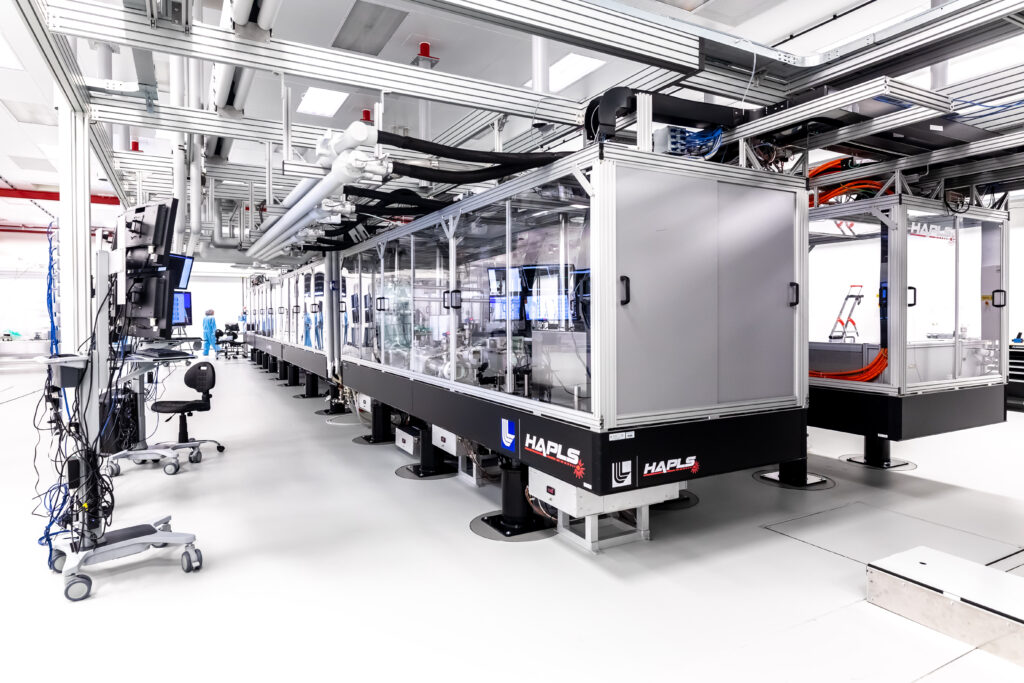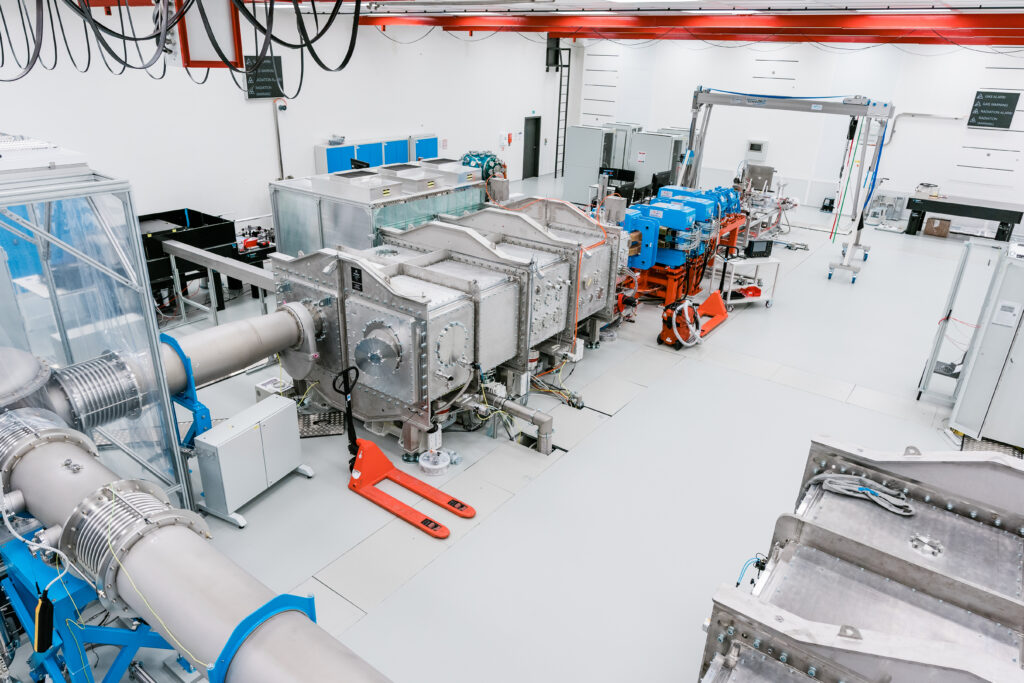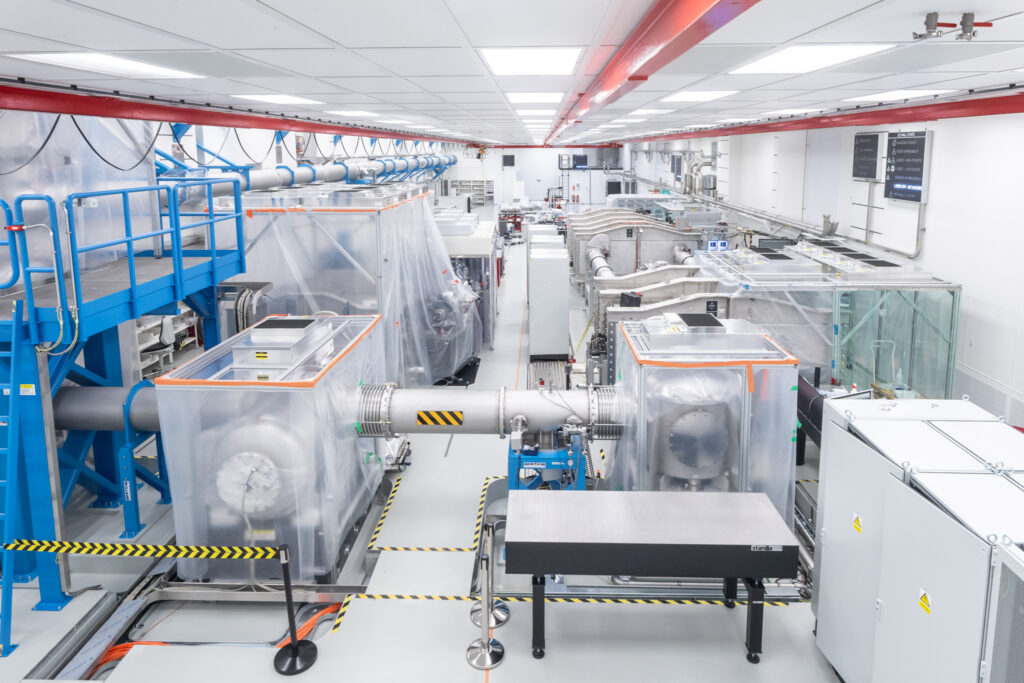Located at the ELI Beamlines Facility, the L3 HAPLS (High-repetition-rate Advanced Petawatt Laser System) marks a significant milestone in laser technology and scientific advancement. Developed at Lawrence Livermore National Laboratory, L3 HAPLS is redefining the landscape of laser plasma acceleration with its unparalleled capabilities.
The system, designed to deliver petawatt (PW) pulses of about 30 joules in less than 30 femtoseconds at a 10 Hz repetition rate, stands as a testament to the innovative spirit driving ELI Beamlines Facility.
L3 HAPLS features a state-of-the-art pump engine with a 200 J design pulse energy, utilizing two Nd-doped glass amplifiers cooled by helium gas. The amplifiers are powered by the world’s highest peak-power pulsed laser diode arrays, each providing 800 kW peak power. This makes L3 HAPLS a leader in high-power laser systems, currently capable of delivering 0.4 PW peak power pulses on target at a repetition rate of up to 3.3 Hz, which are offered to a broad user community, also taking advantage of dedicated target areas and secondary sources (electrons and ions) based on the interaction of relativistic intensity laser pulses with under-critical and over-critical density plasma (gas and solid targets, respectively).
Recently, the L3 HAPLS laser enabled groundbreaking laser plasma acceleration experiments. Achieving acceleration of GeV-class electron bunches at up to 3.3 Hz, this feat was realized at ELI Beamlines’ ELBA (Electron Beamline for fundamental science) in a collaborative effort with internationally recognized teams. The experimental run was conducted as part of the user-assisted commissioning mode as a joint effort between the ELI team and teams from Queen’s University Belfast (UK), University of Michigan (USA), and Kansai Institute for Photon Science (Japan). ELBA is designed to enable users to carry out relativistic electron-laser collision experiments fully exploiting the high repetition rate capability of L3 HAPLS. The experimental campaign allowed to demonstrate that the L3 HAPLS laser system can sustain high-power operations for a net time of 67-hours (maintenance free) delivering over 60 thousand shots on target in 15-days.
Previously, L3 HAPLS demonstrated its technical prowess by driving the ELIMAIA (ELI Multidisciplinary Applications of laser-Ion Acceleration) beamline, accelerating protons to energies up to 40 MeV at a 0.5 Hz repetition rate through the interaction of ultrahigh intensity pulses (>3×10^21 W/cm2) with thin foil targets. These achievements pave the way for a variety of scientific applications and exploration. ELIMAIA capabilities have been offered within the ELI ERIC user Call-2 to study novel laser-plasma acceleration schemes, but also to generate tertiary sources (e.g. neutrons) or explore multidisciplinary applications. The first open-access user experiment at L3-ELIMAIA exploring all-optical particle beam transport schemes has been recently conducted by a consortium of users from Queen’s University Belfast (UK), National Institute of Nuclear Physics (Italy), Central Laser Facility (UK), and ELI Nuclear Physics (Romania).
The exceptional quality of L3 HAPLS’s laser pulses, high spatial and temporal quality laser pulses with superior pointing stability combined with its high peak power and repetition rate, positions it as a formidable tool for both fundamental science and societal applications. The range of laser-matter interaction setups available at ELI Beamlines ensures that L3 HAPLS will continue to enable groundbreaking experiments and discoveries.

L3 HAPLS laser system

E4 experimental hall – ELIMAIA

E5 experimental hall – ELBA





